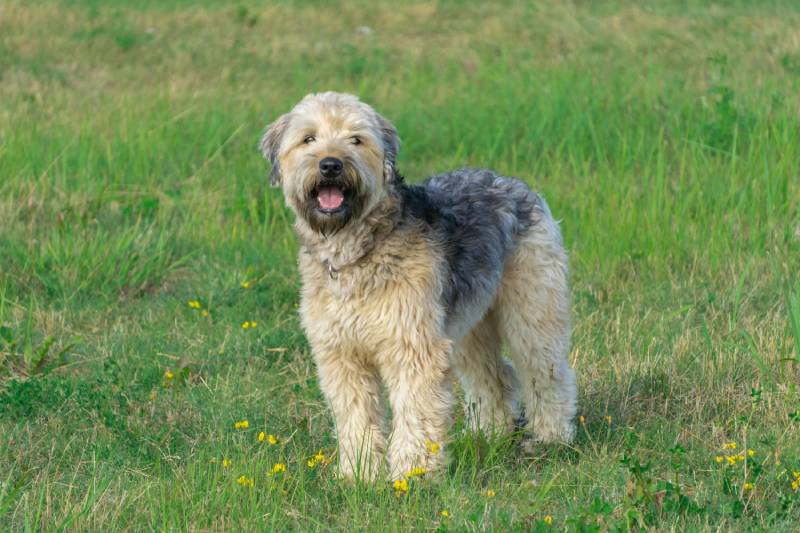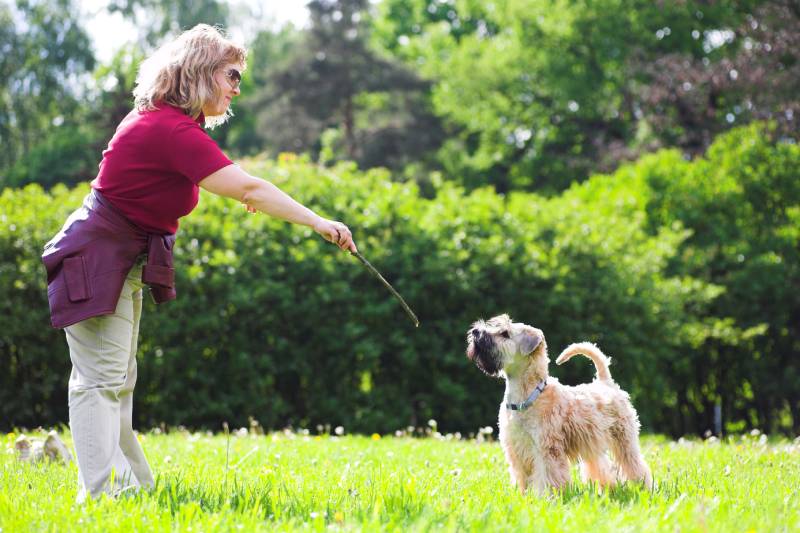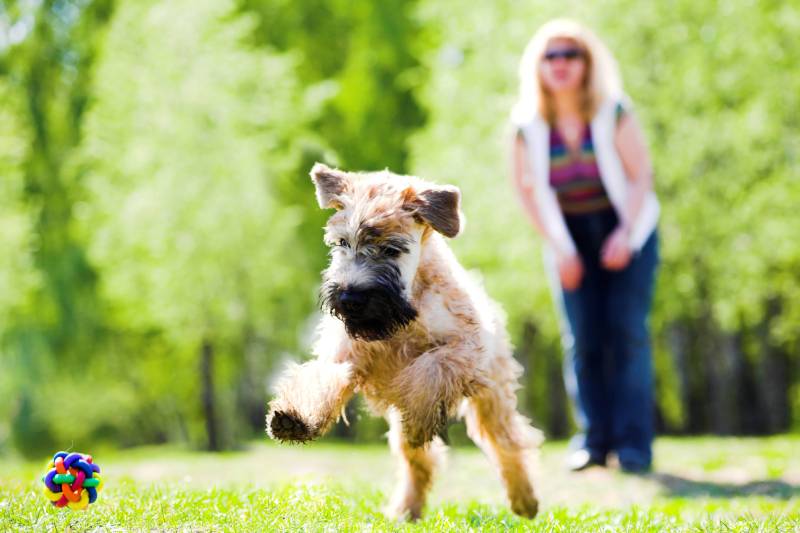- March 27, 2024
How to Train Your Wheaten Terrier: 7 Expert Tips


One of the best things you can do for your dog is train them well. While clever and hardworking, Wheaten Terriers can be particularly challenging to train. These dogs are almost too smart for their own good, and that willful behavior can create obstacles.
Professional training is always recommended, but here are some tips to give your dog the best possible start and improve your training outcome.

Before You Start: Supplies You’ll Need
- Training treats
- Toys
- A collar and leash
- A clicker (optional)
The 7 Expert Tips on Training Your Wheaten Terrier
1. Be Consistent
Consistency in your training is one of the more important factors in its success. You need to be consistent in what cues you use, what intonation, and what steps to ask them. All your family members need to be on the same page, including your partner or children, to ensure that consistent rules are enforced.
Since Wheaten Terriers are intelligent but a bit stubborn, consistency will help drive the training home. For example, your dog needs to have the same rules for going through a door. If you choose to have your dog sit and wait before walking through, everyone in the family needs to follow those same steps. If your dog is allowed to run out sometimes and not others, your training won’t be as effective.

2. Show Patience
Getting frustrated with your dog won’t get your training any further. Your dog isn’t “dumb” if they don’t understand what you’re asking; you simply need to ask differently. Keep it positive, even if the situation is testing your patience.
Even if you’re frustrated or experience a setback, always praise your dog for any improvement—even if it’s small. You can get too focused on the goal, which takes the fun and motivation out of the experience for both of you. Celebrate those small wins to stay on track.
3. Use Positive Reinforcement Methods
The American College of Veterinary Behaviorists (ACVB) and several veterinary organizations agree that positive reinforcement training is the most effective method. This relies on humane, effective, and evidence-based training that encourages positive behaviors without punishing negative ones. This can be challenging, especially if you’re new to training, but working with a trainer will help you get a solid understanding of the concept.

4. Use Food Rewards
Some dogs are highly food-motivated and will work hard for treats, even kibble. Others are pickier and may only work hard for their preferred treats, which could be soft and chewy or hard and crunchy. Still, other dogs aren’t motivated by food at all, so you will need to rely on a favorite toy or plenty of praise.
Keep in mind that Wheaten Terriers are medium-sized dogs, so overdoing it on the treats could lead to obesity. Use low-calorie treats or break off small pieces of a bigger treat.
5. Train in Small Doses
Short training sessions throughout the day are more effective than one longer session. Ideally, keep your sessions to around five minutes to ensure that you have your dog’s attention. They can get burned out, just like us.
Another important aspect of training is establishing that your commands are the same, no matter where you are. You want your dog to understand that “sit” is the same at home as at the vet’s in front of a busy street. Working in short sessions allows you to work with your dog in different environments.

6. Make Training Fun
Training should be fun for you and your dog. Stay positive and keep training varied to engage your dog. You could even mix some play sessions into your training sessions to break up the monotony or use trick training alongside obedience to challenge your dog’s mind.
7. Consult a Professional Trainer
Training a dog isn’t easy, especially if it’s new or you’re working with the ever-willful Wheaten Terrier. If you don’t feel like you’re getting the results you want, consult a professional trainer. They have years of experience and knowledge that can help you develop better training habits for your dog, particularly when it comes to problem behaviors.
Make sure you do your research and find the right trainer, however. A lot of trainers advertise positive reinforcement but use aversive methods. Read plenty of reviews and audit a class, if possible.

Conclusion
Training any dog can be challenging, but with a Wheaten Terrier’s intelligence level, some people might have their hands full. But it is not impossible. Remember that training is not about dominating your dog but establishing boundaries and staying consistent to reward the behavior you want. It’s best to work with a trainer who can help you learn the appropriate training methods, but these tips should help you work with your dog outside of class and build a strong bond.
Featured Image Credit: bohemama, Shutterstock
Tags
What do you think?
Related Articles

New Puppy Checklist: Gear You’ll Need for Your New Dog
Getting a new puppy is really exciting, but before you welcome them home, it’s important to prepare your space for them. Since puppies need a

How Big Do Mini Poodles Get? Vet Reviewed Average Weight & Growth Chart – Dogster
The information is current and up-to-date in accordance with the latest veterinarian research. Learn more » When you buy a Miniature Poodle, you might not

Can Police Dogs Smell Nicotine? Vet Verified Facts & Info – Dogster
The information is current and up-to-date in accordance with the latest veterinarian research. Learn more » While cigarette sales have been declining steadily for decades,

How Old Is 5 in Dog Years? Vet-Approved Guide to Each Size of Dog – Dogster
The information is current and up-to-date in accordance with the latest veterinarian research. Learn more » A common method for calculating a dog’s age is

